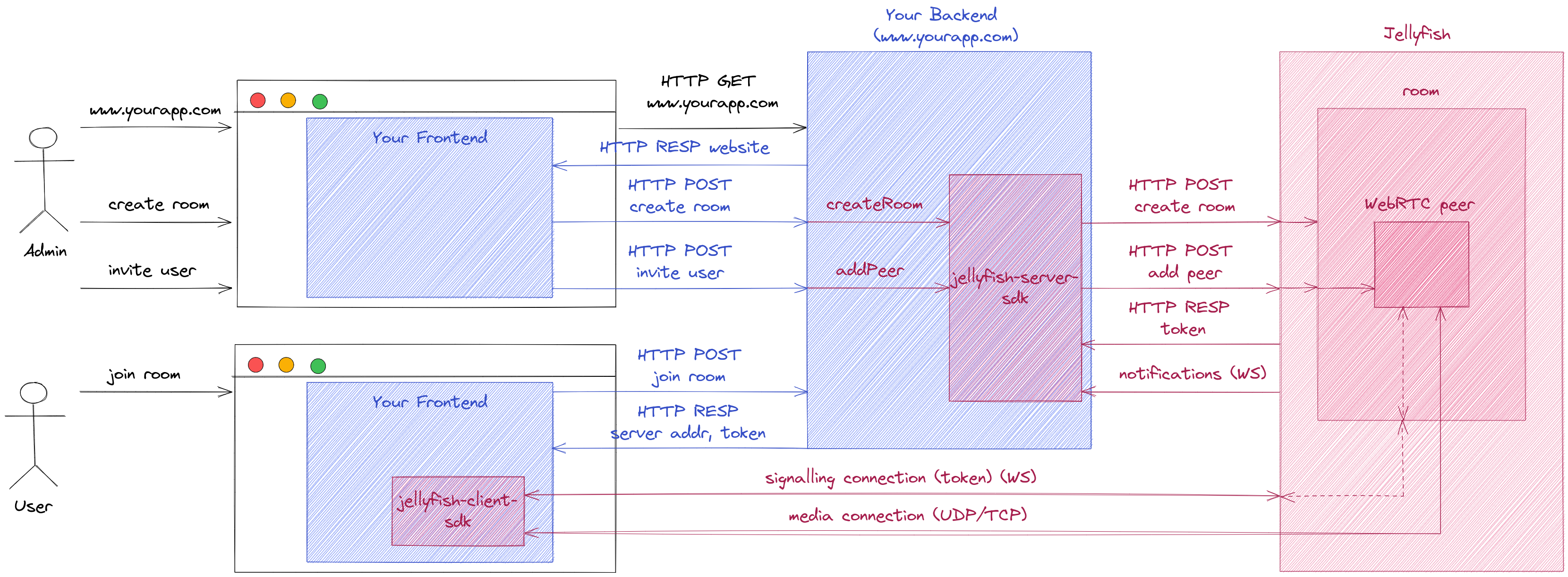Architecture
Fishjam ships with a couple of SDKs that make it easier to manage its state, as well as publish and consume tracks.
There are two types of SDKs: server side and client side.
Server SDKs
Server SDKs allow you to manage Fishjam state. In particular, you can:
- authenticate
- create/delete rooms
- add/remove peers
- add/remove components
- subscribe for notifications
Under the hood, Server SDKs just use Fishjam REST and WS API, see Fishjam API.
As an example, you can use server SDK to introduce a time limit on meeting duration and shut down the room after it passes.
Client SDKs
Client SDKs allow you to connect to Fishjam to publish and consume tracks. In particular, you can:
- authenticate
- join specific room
- publish audio and video
- receive audio and video from other peers and components
At the moment, Fishjam supports only one type of client - WebRTC.
Diagram
The whole concept is presented in the following diagram.


Your Backend (BE) - serves your application frontend, and manages the database and application-specific logic.
Fishjam (JF) - Fishjam media server. Manages media.
Admin - someone who has special permission in your application - can create/delete rooms, add/remove peers, etc.
User - someone who connects to Fishjam to send and receive media.
Everything starts with Admin who sends an HTTP request to BE to create a new room. BE uses fishjam-server-sdk to communicate with JF and create the room. Under the hood, fishjam-server-sdk uses REST API exposed by JF. After the room has been created, the Admin invites a user by sending a new HTTP request to BE. Again, BE uses fishjam-server-sdk to add the new peer to JF.
On the user side, they send a request to BE to join the room. BE replies with JF IP address it should connect to. Then, the User uses fishjam-client-sdk to connect to JF. After the connection has been established, the User can send and receive media.